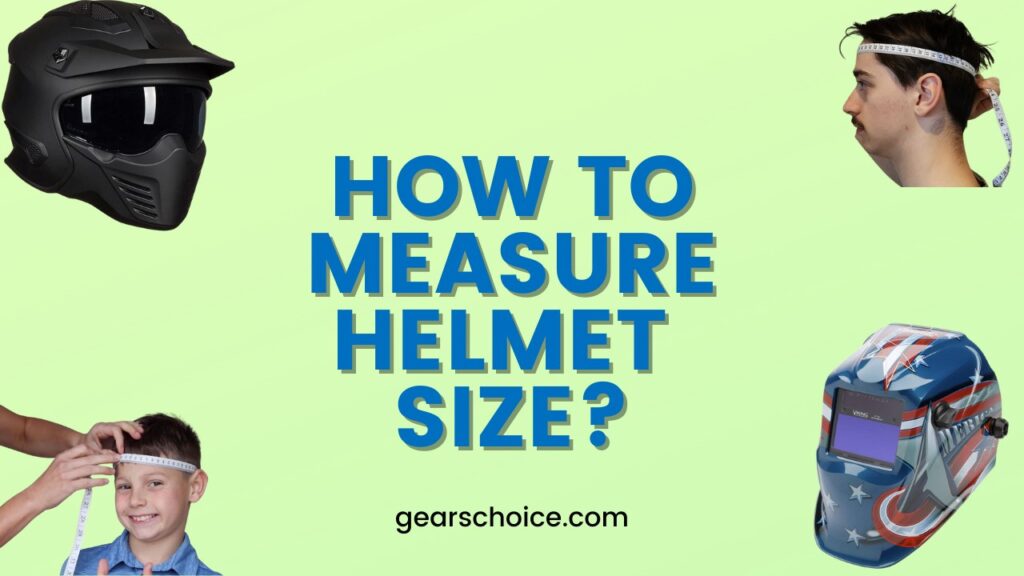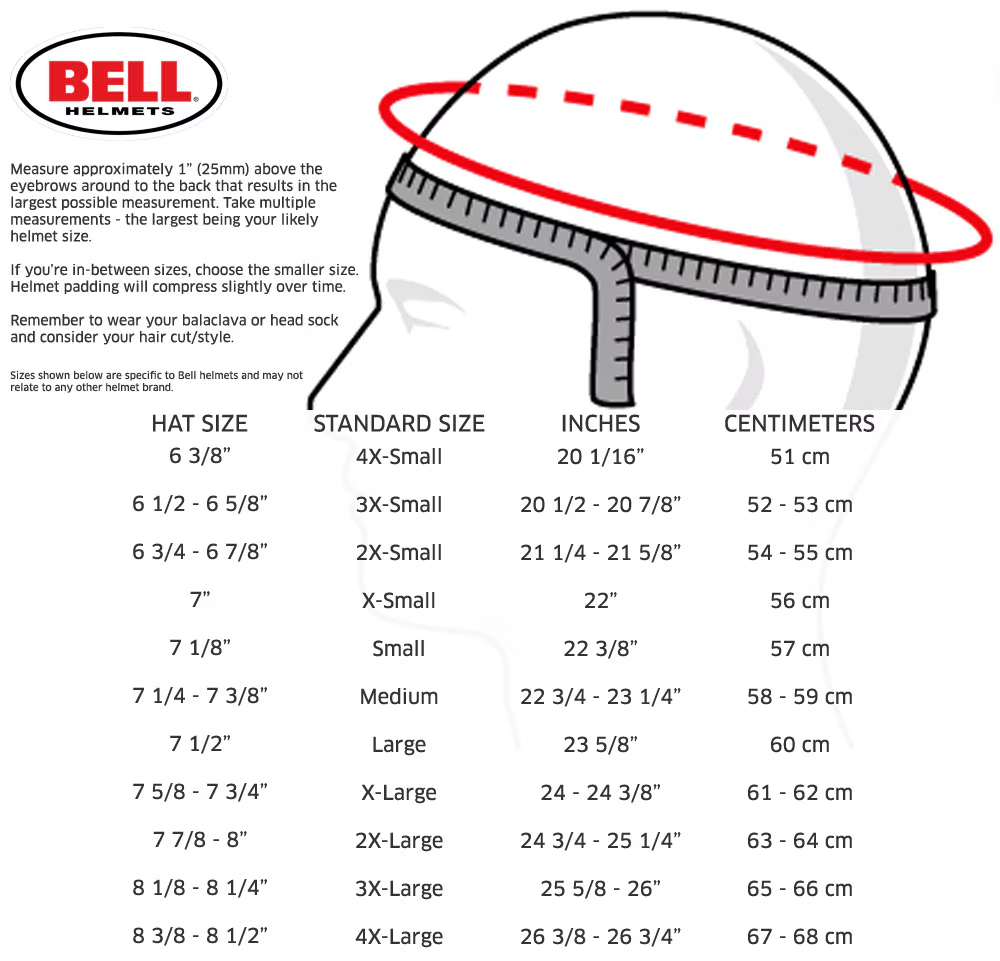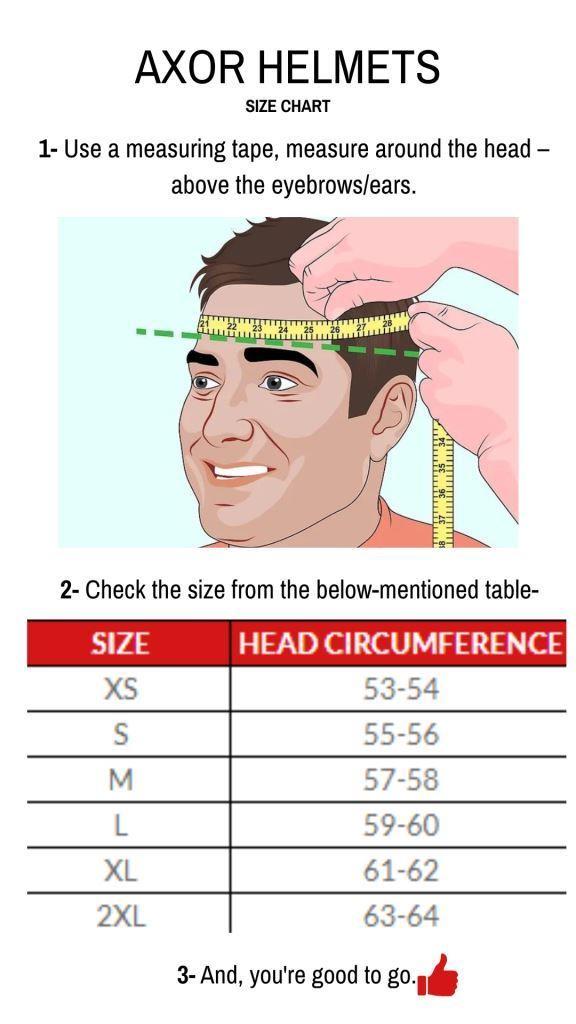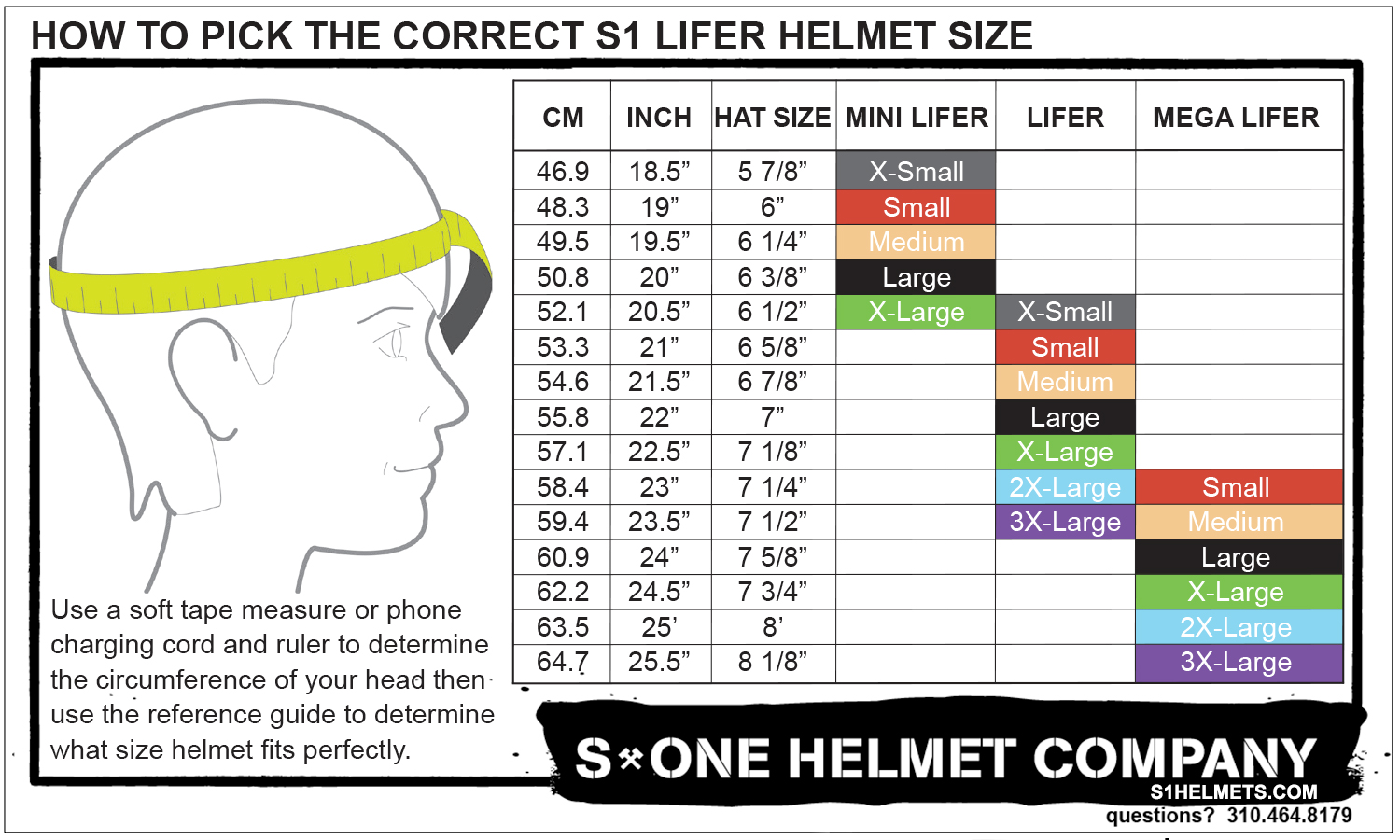Understanding the Importance of a Correctly Sized Helmet
When it comes to safety and protection, properly fitting helmets play a crucial role in various activities and sports. Wearing a helmet that fits correctly offers numerous benefits, including enhanced safety, injury prevention, and increased comfort. This is why understanding how to measure helmet size is essential for any individual participating in activities that require head protection.
Gathering the Necessary Measuring Tools
To accurately measure helmet size, you will need two essential tools: a soft measuring tape and a helmet sizing chart provided by the manufacturer. The soft measuring tape, typically made of cloth or flexible plastic, allows for comfortable and precise head circumference measurement. A helmet sizing chart, usually found on the manufacturer’s website or in the product documentation, serves as a reference for determining the appropriate helmet size based on your head measurements.
Measuring Head Circumference: Step-by-Step Instructions
To accurately measure your head circumference and determine the appropriate helmet size, follow these simple steps:
- Using a soft measuring tape, encircle your head just above the eyebrows and above the ears, ensuring the tape remains level and parallel to the ground.
- Maintain a consistent tension, similar to that of a snug hat, and record the measurement in centimeters or inches, depending on the manufacturer’s sizing chart preferences.
- Measure at the largest portion of your head, as this is where the helmet will sit and provide the best fit.
- Repeat the process two or three times to ensure accuracy and take the average of your measurements if there are any discrepancies.
Consulting the Manufacturer’s Helmet Sizing Chart
Once you have accurately measured your head circumference, it’s time to consult the manufacturer’s helmet sizing chart to determine the appropriate helmet size. These charts, provided by the helmet manufacturer, help you correlate your head measurement with the corresponding helmet size. Keep in mind that sizing conventions may vary between brands and models, so always refer to the specific chart associated with the helmet you are interested in purchasing.
To use the sizing chart effectively, follow these steps:
- Locate the manufacturer’s helmet sizing chart, typically found on their website or in the product documentation.
- Identify the range of head circumference measurements that correspond to each helmet size.
- Match your head circumference measurement with the appropriate helmet size, ensuring that you are within the specified range.
- If your measurement falls between sizes, consider selecting the larger size, as most helmets can be adjusted for a more precise fit.
Trying on Helmets: Adjusting for a Secure Fit
After measuring your head circumference and consulting the manufacturer’s sizing chart, it’s crucial to try on helmets and make adjustments for a secure fit. A properly fitted helmet should be snug but comfortable, allowing for minimal movement while providing adequate protection. Here are some tips for ensuring a secure fit:
- Place the helmet on your head, positioning it level and covering your forehead.
- Fasten the chin strap, ensuring it is tight enough to hold the helmet in place without causing discomfort.
- Check for lateral movement by shaking your head from side to side. If the helmet moves excessively, consider adjusting the fit pads, retention system, or strap configuration.
- Ensure that the helmet’s retention system, often found at the back of the helmet, is properly adjusted to hold the helmet firmly in place.
- Verify that the chin strap is positioned correctly, forming a ‘V’ shape under each ear lobe, and that it is tight enough to prevent excessive movement or removal of the helmet during activities.
- Consider using additional fit pads, if provided, to fine-tune the helmet’s fit and enhance comfort.
Selecting the Appropriate Helmet Size: Factors to Consider
When choosing a helmet size, there are several factors to consider to ensure a proper fit and optimal protection. These factors include head shape, personal preference, and the specific requirements of various activities and sports. Here’s a closer look at each factor:
Head Shape
Helmets are designed to accommodate different head shapes, such as round, intermediate, and long oval. Understanding your head shape can help you select a helmet that provides the best fit and comfort. Some manufacturers offer helmets specifically designed for specific head shapes, so be sure to consider this when selecting a helmet size.
Personal Preference
Comfort is subjective, and personal preference plays a significant role in determining the right helmet size. Some individuals may prefer a slightly looser fit, while others may prefer a snugger feel. When trying on helmets, consider how each size and fit feels on your head and prioritize comfort without compromising safety.
Activity and Sport-Specific Requirements
Different activities and sports have unique helmet requirements. For example, bicycle helmets often feature a visor and multiple vents, while climbing helmets prioritize lightweight designs and robust chinstrap systems. Be sure to consider the specific requirements of your chosen activity or sport when selecting a helmet size to ensure the best possible protection and performance.
Re-measuring and Re-evaluating: Ensuring a Continued Proper Fit
Head sizes and shapes can change over time due to factors such as growth, weight loss, or aging. As a result, it’s essential to periodically re-measure and re-evaluate helmet fit to ensure continued safety and comfort. This is especially important for growing children, who may require new helmet sizes every few years as they develop.
To re-measure your head circumference, follow the step-by-step instructions provided in the ‘Measuring Head Circumference’ section of this guide. After obtaining your new measurement, consult the manufacturer’s helmet sizing chart to determine if your current helmet size is still appropriate or if you need to consider a different size. If you find that your helmet no longer fits correctly, it’s crucial to replace it with a properly sized one to maintain optimal protection.
In addition to re-measuring head circumference, consider the following tips to ensure a continued proper fit:
- Regularly inspect your helmet for signs of wear, damage, or deterioration, and replace it if necessary.
- Re-adjust the fit pads, retention system, and strap configurations as needed to maintain a secure fit.
- Monitor any changes in head shape, size, or comfort, and address them promptly by trying on new helmets or consulting a professional for advice.
Maintaining Helmet Integrity: Regular Inspections and Replacements
Regular helmet inspections and timely replacements are essential for maintaining long-term safety and performance. Over time, helmets can deteriorate due to factors such as exposure to sunlight, extreme temperatures, and general wear and tear. By conducting routine inspections and replacing your helmet as needed, you can ensure that your helmet continues to provide the necessary protection during activities and sports.
To inspect your helmet, follow these steps:
- Check for any visible signs of damage, such as cracks, dents, or frayed straps.
- Examine the helmet shell for any scratches, abrasions, or other indications of impact.
- Ensure that the retention system functions properly, allowing for easy adjustment and secure fastening.
- Inspect the fit pads for signs of wear, damage, or disintegration.
- Verify that the helmet’s chinstrap is in good condition, with no fraying or damage, and that it can still be adjusted to fit securely.
If you notice any of these issues or if your helmet has been involved in an impact, it’s crucial to replace it as soon as possible. Even if your helmet appears to be in good condition, consider replacing it every 3 to 5 years, depending on the manufacturer’s recommendations and the frequency of use. By investing in a new helmet, you can ensure that you are benefiting from the latest safety features and technologies, providing you with the best possible protection during your activities and sports.







